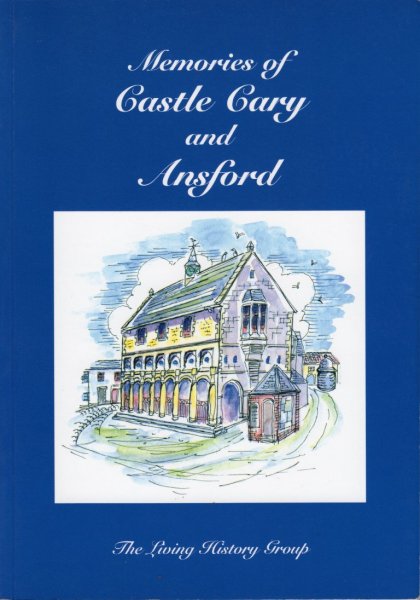
Memories of Castle Cary and Ansford
Castle Cary Living History Group
(Subsumed by Castle Cary Museum)
ISBN 1-902247-03-5
Height-210mm, Width-148mm, Depth-10mm,
Weight-341g, Pages-179.
Obtainable from:
The Bailey Hill Book Shop
Fore Street, Castle Cary, BA7 7BG.
www.baileyhillbookshop.com
Extracts
My father was a threshing machine proprietor. We lived on Bailey Hill in the house called Pie Corner. I remember playing in the back yard of this house when I was a child of five years. The threshing machine and steam engine were kept at the back of this house when not in use on the farms for threshing corn. My father would contract out to the farmers for days or perhaps a week at a time, depending on how much corn they had to thresh. After he had set up the threshing machine for work he would use a pony and trap to go to the farm and to return home at the end of each day. The charge for each day's threshing would be £3 per day. We were very lucky if we got that from the farmers. We were very often paid in kind, perhaps a side of pig.
....
Cider was made on about eight different farms in the parish, using their own-grown apples which were usually a variety of cider apple with Yarlington Mill and Kingston Blacks two of the most popular and best. Apples such as Bramleys and Morgsan Sweets were avoided if good cider was to be made.
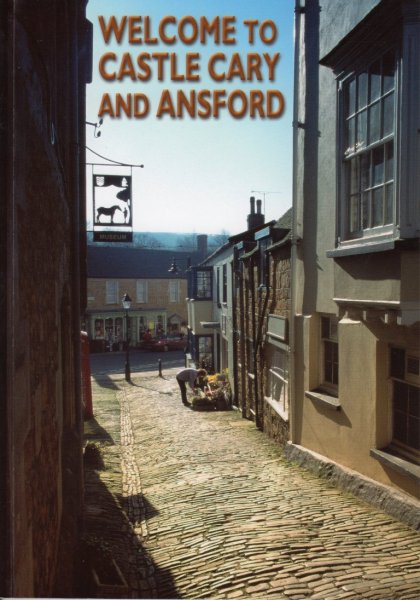
Welcome to Castle Cary and Ansford
Castle Cary Living History Group
(Subsumed by Castle Cary Museum)
ISBN 1-902247-04-3
Height-210mm, Width-148mm, Depth-5mm,
Weight-140g, Pages-56.
Obtainable from:
The Bailey Hill Book Shop
Fore Street, Castle Cary, BA7 7BG.
www.baileyhillbookshop.com
Extracts
The quaint little building on Bailey Hill known as the Round House has justifiably become a symbol of the town. It was built in 1779 at a cost of £23; appropriated from a couple of charities intended to provide Easter gifts for the poor, and replaced a tree growing on the site. It was used as a temporary lock-up and contains a single cell, seven feet in diameter and ten feet high, with ventilation from two grills.
....
Castle Cary is first and foremost a market town, and the biggest of the Museum's six display rooms is dedicated to the tools, products and domestic 'comforts' of an agricultural community. You can see exhibits of local cheese making and glimpse the sheer effort that washing day was for ordinary folk,
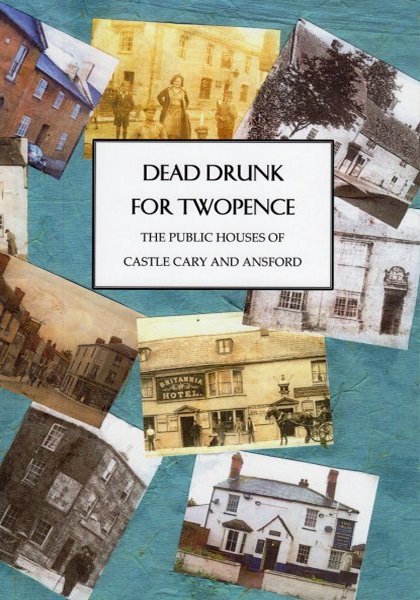
Dead Drunk For Twopence
By Chris Hicks.
Castle Cary Living History Group
(Subsumed by Castle Cary Museum)
ISBN 978-1-902247-07-6
Height-250mm, Width-173mm, Depth-5mm,
Weight-245g, Pages-70.
Obtainable from:
The Bailey Hill Book Shop
Fore Street, Castle Cary, BA7 7BG.
www.baileyhillbookshop.com
Extracts
Get drunk for a penny, dead drunk for twopence, and have clean straw for nothing.
This was the sign outside an eighteenth century drinking house which gives some indication of the nature of such places.
....
In April of that year the vicar, churchwardens and twenty other citizens of Castle Cary placed a letter in the Sherborne Mercury addressed to the licensing justices petitioning them to grant only five liquor licences in the town and these only to a list of approved persons that the constable would supply. The letter went on to state that 'all others are deemed useless and more for encouraging vice and immorality. This clearly aroused some animosity locally as in July a second letter appeared, again from the vicar and others, offering a reward for the arrest of various unknown persons who had threatened the signatories of the first letter. It begins; 'Whereas an anonimous [sic] letter was found in the Backside of Mr Seth Burge one of the Churchwardens...threatening to burn the houses, kill them or the cattle of such...endeavouring to put down some of the little Alehouses in the town or be revenged on them in some other way...'
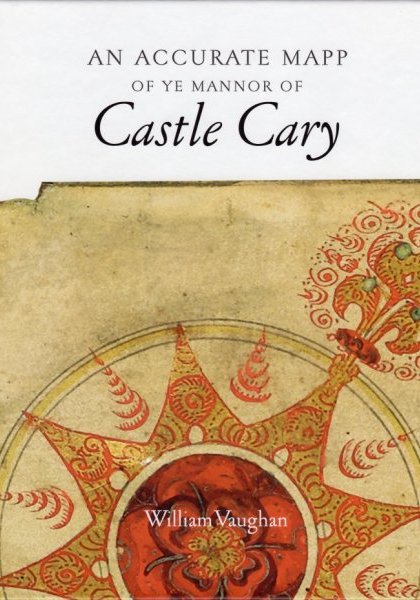
AN ACCURATE MAPP
OF YE MANNOR OF
CASTLE CARY
By William Vaughan.
ISBN 978-1-9997946-0-6
Height-245mm, Width-205mm, Depth-17mm,
Weight-548g, Pages-127.
Obtainable from:
The Bailey Hill Book Shop
Fore Street, Castle Cary, BA7 7BG.
www.baileyhillbookshop.com
Extracts
The late seventeenth-century map of the Manor of Castle Cary, now preserved in the manuscript collection of the British Library, is an unique historical record. It provides the earliest surviving pictorial survey of the Somerset town of Castle Cary, together with the adjacent parishes of Ansford and Hadspen. Measuring four feet in width it provides a detailed account of the Manor as it was in the mid-1680s.
....
This book has been designed first and foremost to enable a detailed exploration of the extensive information about Cary that is provided in the map. It reproduces the map divided into sections. Each section is accompanied by a guide plan that identifies major features.
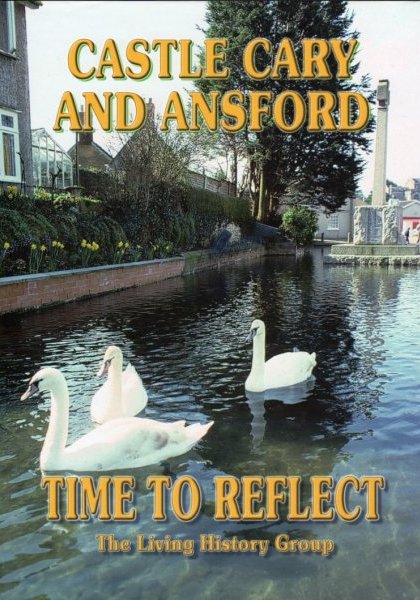
CASTLE CARY
AND ANSFORD
TIME TO REFLECT
Castle Cary Living History Group
(Subsumed by Castle Cary Museum)
ISBN 1-902247-01-9
Height-305mm, Width-220mm, Depth-18mm,
Weight-1038g, Pages-177.
Obtainable from:
The Bailey Hill Book Shop
Fore Street, Castle Cary, BA7 7BG.
www.baileyhillbookshop.com
Extracts
Castle Cary Vicarage, seen here in 1910, was built in 1846 by Canon Richard Meade, Vicar 1845-1880, at his sole expense on a "greenfield site" though it is likely that a route, of which South Street and Victoria Road are remaining sections, originally crossed the area, bordered by the Saxon and early Norman settlement.
....
Cottages in the Upper High Street in 1890, from a glass plate negative. Note that here, as is seen elsewhere in Castle Cary, the lower courses of the walls are built in blue lias stone rather than the Cary stone used for the remainder, presumably because the former is more resistant to crumbling as a result of rising damp.
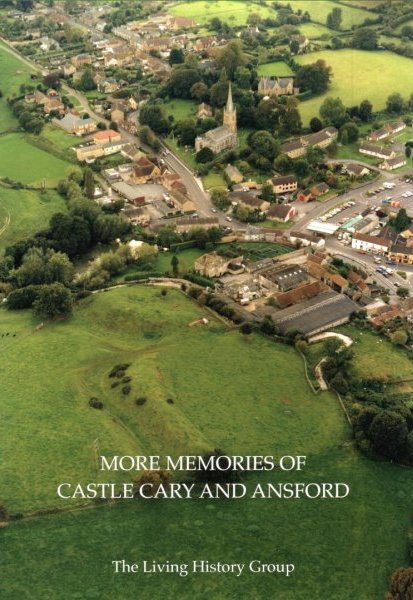
MORE MEMORIES OF
CASTLE CARY AND ANSFORD
Castle Cary Living History Group
(Subsumed by Castle Cary Museum)
ISBN 978-1-902247-05-2
Height-302mm, Width-215mm, Depth-28mm,
Weight-1464g, Pages-321.
Obtainable from:
The Bailey Hill Book Shop
Fore Street, Castle Cary, BA7 7BG.
www.baileyhillbookshop.com
Extracts
The first new tractor I ever drove was bought by my father, it was an Allis Chalmers without a self starter and without a cab and was supplied by my uncle Jack Gilson of Stoke St. Michael. The tractors were mainly Fordsons, Fergusons, with a few American made ones during the war years. Most implement repairs were carried out by the local blacksmiths; at Castle Cary we had Parson Bros., whose main work was shoeing horses.
....
In the heart of the small Somerset town of Castle Cary, with a population of little more than 2,000, is a colony of hand craftsmen who are said to be unique. Here, in a cluster of old buildings - some little more than sheds - they may be found daily treating the hair of horses, pigs and oxen and making it up into various forms. Although the craftsmen are almost unknown outside their immediate neighbourhood, except by those who depend upon them, their work is sent all over the world.
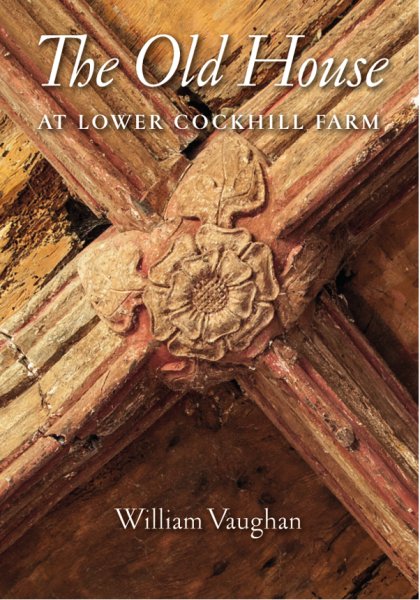
THE OLD HOUSE
AT LOWER COCKHILL FARM
By William Vaughan.
ISBN 978-1-9997946-2-0
Height-242mm, Width-202mm, Depth-7mm,
Weight-148g, Pages-66.
Obtainable from:
The Bailey Hill Book Shop
Fore Street, Castle Cary, BA7 7BG.
www.baileyhillbookshop.com
Extract
The Old House at Cockhill is one of the most remarkable buildings in the parish of Castle Cary, and its oldest surviving dwelling.
Timbers in the hall date from 1435, but it is almost certain that parts of the building are even older.
Upstairs is a small chamber with rare and unusual wall paintings from the late fifteenth century.
Described in Pevsner's Buildings of England Somerset: South and West as 'an exceptionally complete small house' of the period, it offers an unique insight into the layout and character of a medieval farm house.
This book gives an account of the history of the house and explores the intriguing mysteries that surround it.